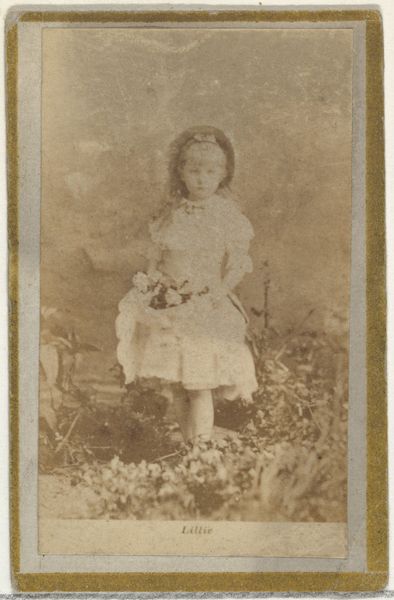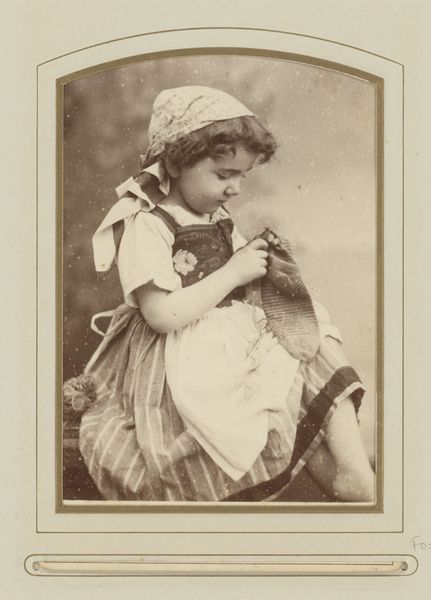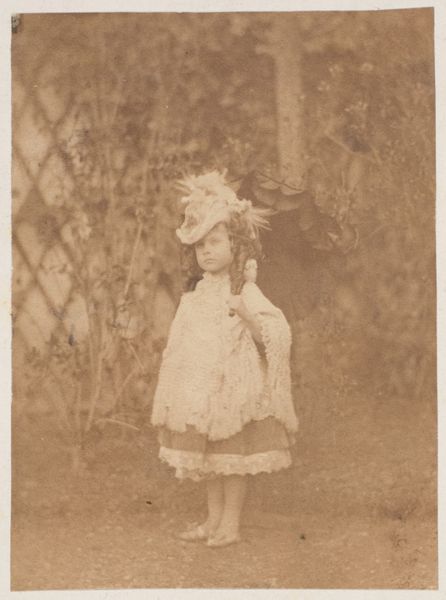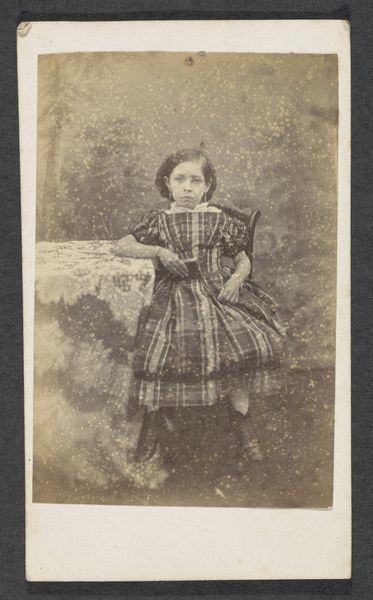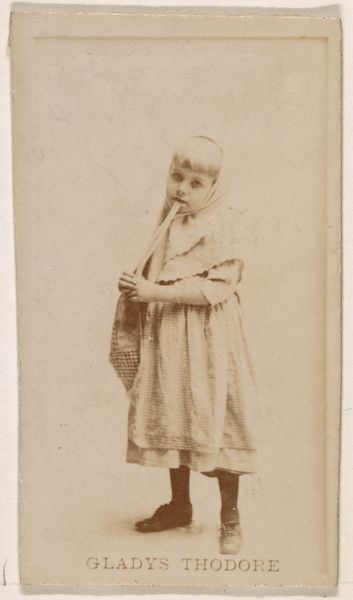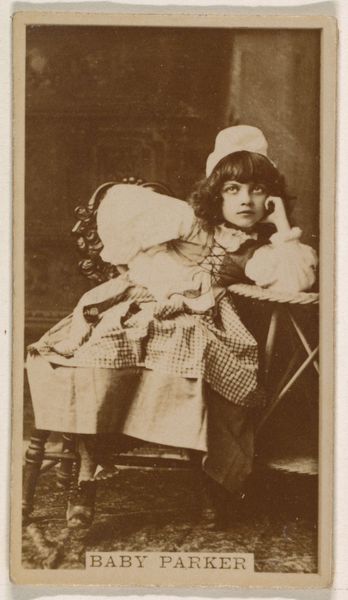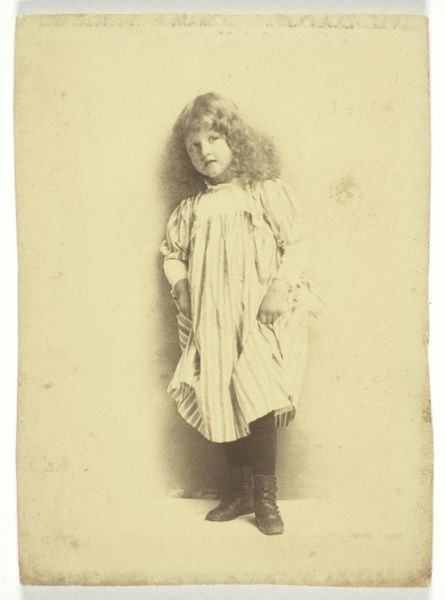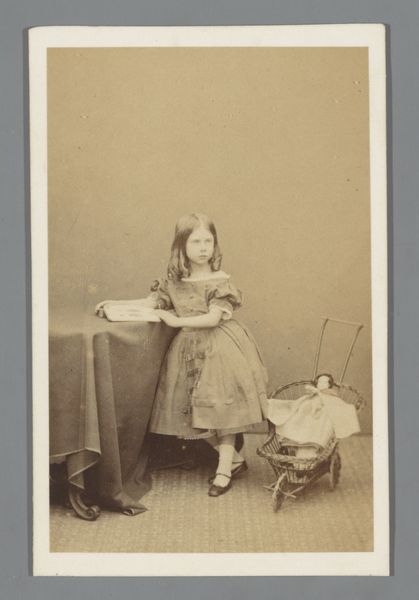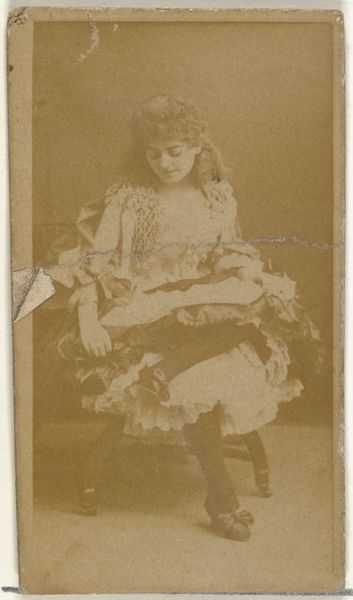
Dimensions: Image: 16.3 x 10.9cm (6 7/16 x 4 5/16in.) Mount: 14 1/8 in. × 10 7/8 in. (35.8 × 27.6 cm)
Copyright: Public Domain
Curator: We’re looking at an albumen print from 1858 by Lewis Carroll titled "Alice Liddell as 'The Beggar Maid.'" Editor: What strikes me immediately is the somberness. Despite the deliberate theatricality of the pose, there’s a palpable sense of melancholy clinging to this photograph. Curator: Precisely. The sepia tones create a flattened, almost dreamlike space. Focus on the texture of the young Alice's tattered dress—it creates this very interesting contrast with the smooth, soft skin. The lines formed by the folds draw the viewer's eye. Editor: The symbolism is loaded, isn't it? Alice, usually associated with wonder and fantasy, is presented in the guise of poverty. Consider the societal constraints placed upon young women in the Victorian era and Carroll's own complex relationship to them. The image highlights issues of representation and agency. This staged 'beggar' could be read as a critique of societal expectations. Curator: An interesting reading. I might suggest that the Romantic framing presents a somewhat stylized vision of poverty, less concerned with true social critique and more focused on the pictorial possibilities. The tonal gradations create depth. The subject has both feet cropped. Notice, how the play of light and shadow across her form underscores a very crafted ideal. Editor: But consider the power dynamics at play here. Carroll, a man of privilege, photographs a young girl, staging her in a position of vulnerability. It inevitably complicates the aesthetic value with questions about consent, exploitation, and the male gaze, despite Carroll’s intent. The performativity of “The Beggar Maid” underscores the masquerade of social roles. Curator: Indeed, though such complexities often enhance the dialogue we have with the work. The relationship between model and photographer yields great depth, as is often the case in portraiture. Editor: True. In confronting the difficult narratives within the piece, it really allows one to appreciate it within the cultural landscape that produced it. Curator: And when examined from a compositional perspective, these tensions simply elevate the photograph beyond its historical moment to allow its status as a complex, interesting artwork.
Comments
No comments
Be the first to comment and join the conversation on the ultimate creative platform.
